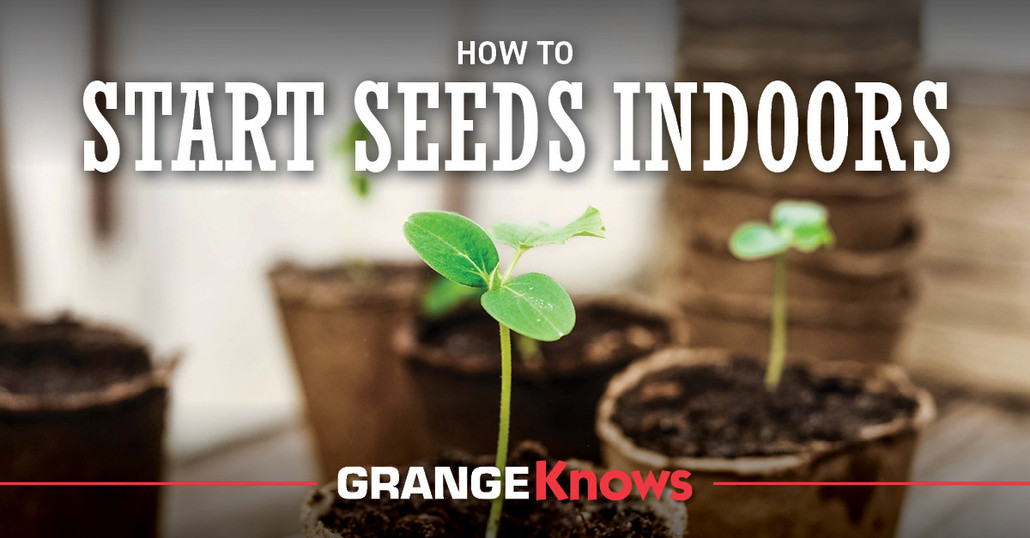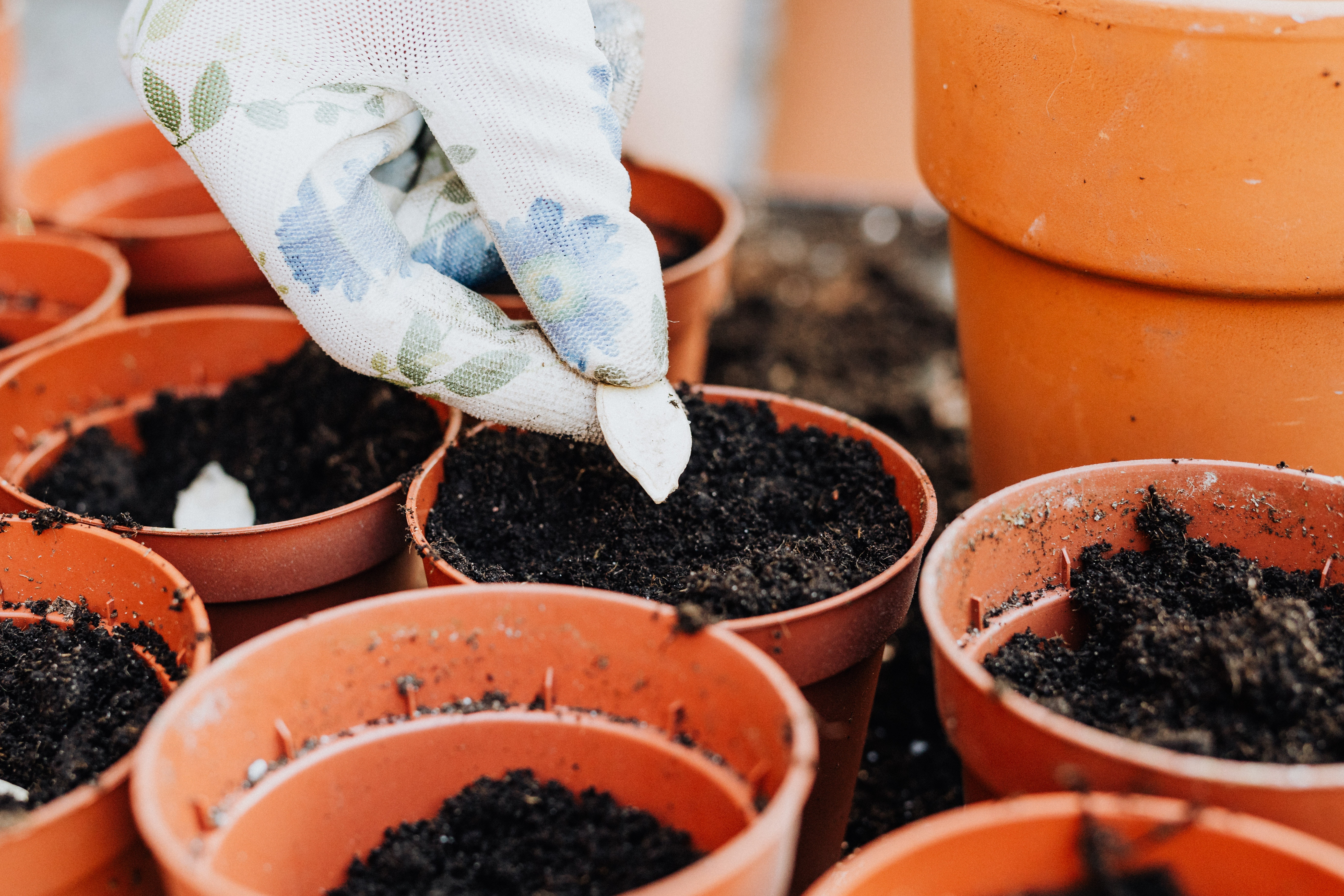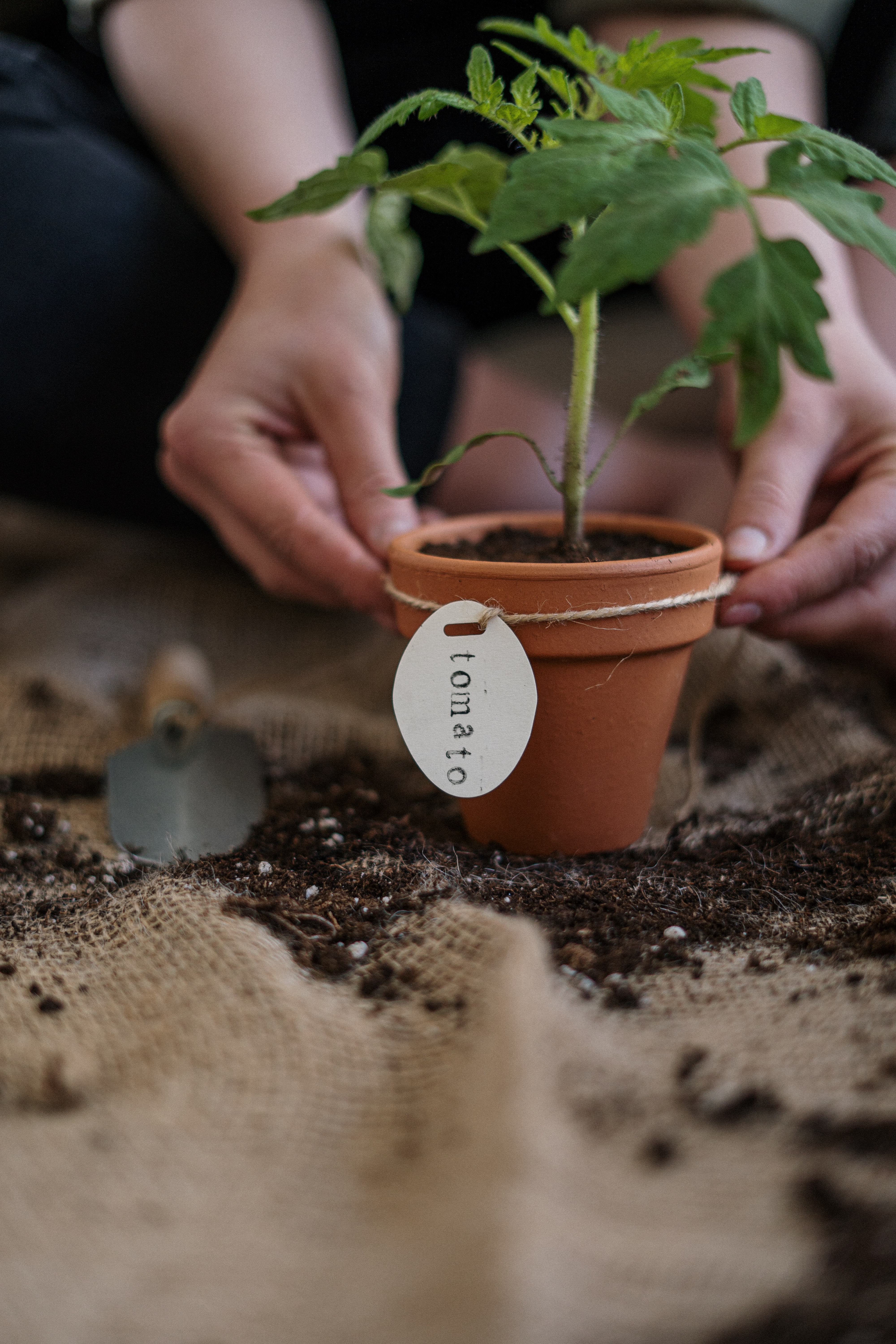
How to Start Seeds Indoors
Posted by Grange Co-op on 8th Feb 2022
Growing your own herbs, fruits, and vegetables is a fantastic way to get high-quality food in your kitchen without paying a bunch of money for it. As a bonus, vegetable gardening is wonderful for the environment.
Depending on your climate and the type of seeds you want to grow, it may be beneficial for you to start your seeds indoors rather than immediately planting them in the ground. To help you get your garden going, we'll talk about all the stuff you need to get started and cover the process of sowing seeds.
The Tools You'll Need
Seed starts are unfortunately delicate, and there are a number of things that can result in the plants failing to grow properly. Even with everything going right, you should expect that some of the seeds just won't grow. However, with the right set of tools, you can maximize your chances of a bountiful crop. Here's everything you'll need to get started when indoor planting seeds:
• Growing Container - If you were starting seeds outdoors, large pots or raised beds would suffice, however indoors, this just isn't feasible. Seed trays and plug trays are essentially tiny plots for your seeds to start growing in. Seed trays are one large tray meant to start seeds for small plants like herbs until they're big enough to be transplanted either to plug trays or their own pots. Plug trays have individual containers for each seed. You would start bigger plants in plug trays, such as any vegetables you want to start. There are a few different options for containers you can purchase, such as plastic trays or peat pots. However, it's also possible for you to start your seeds in something like an egg carton. Something to keep in mind when choosing is while trays like peat pots and egg cartons are better for the environment, plastic trays can be cleaned and reused.
• Indoor potting soil made for seed starts - Avoid using regular potting soil when starting seeds. Many of the normal potting soils available aren't fine enough for seedlings' roots to easily move through, and the soil doesn't provide enough oxygen flow. Ultimately, this can hinder seedlings from growing strong and successful, which is why we recommend using a seed starter mix specially formulated to meet the needs of seedlings.
• Grow light - Once your plants have started growing, they'll need plenty of light. Most vegetables need between 6 and 8 hours of direct sunlight every day. Light fixtures that you have in your house can be used to grow plants. However, regular incandescent bulbs do not provide the range of color spectrum light that plants thrive on. If you've started your seeds before the designated 'growing season', such as, in the winter, or if your home doesn't have ample access to direct sunlight, then you'll want to invest in a grow light. Grow lights are LED lights are made for indoor plant growing and designed to give off a full range of color in the light which your plant will need in order to grow.
• Heat trays - These are trays that will sit under your growing containers and provide consistent heat to your plants. Even in the winter, your seed starts will grow as if in a spring environment. While a heat tray isn't necessary for starting seeds indoors, it will improve the rate of successful starts.
• Something to water your plants with. While this may seem obvious, you don't actually want to just pour water from a jug onto your seed starts. They're fragile when just starting, and doing that can ruin their growth. Instead, a watering can, or even something like a turkey baster will gently water your plants.
You can often find seed start kitsthat come with most of the stuff you'll need to get started. With assistance from your local Grange Gardening Experts, getting started with indoor seedlings is attainable and shouldn't be difficult.
How to Sow Your Seeds
The first step to starting your seeds is sowing them. To know when you should do that, you can check the label instructions listed on the seed packet you bought. It should say something along the lines of "start indoors 6 weeks before the last expected frost date in your area." The frost dates for your area is something you can easily look up online.
To sow your seeds, follow these instructions:
1. Fill your growing containers with the seed starting soil mix.
2. Make shallow depressions in the soil with your fingertips.
3. Gently press seeds into the depressions to the depth indicated on their seed packet.
4. Sieve some more of the potting mix on top to ensure the seeds are covered.
5. Gently water all the seed starts.
6. Cover the growing container with plastic or some sort of waterproof covering, and poke some holes in the covering. The cover will prevent the soil from drying too quickly, and the holes will prevent mold growth.
That's it! Sowing seeds is simple, but now you have to take care of them until they're ready to go outside. At this point, it can also be helpful to label the growing containers with the type of plants they're growing and the sowing date.
Taking Care of Your Seedlings

Taking care of your seed starts is relatively simple. You just need to make sure they're receiving enough water and light. Regularly check the growing containers to see if they need to be watered. You can do this simply by lifting the container. If it's light, it needs to be watered. You also need to ensure you aren't overwatering your starts. You want the soil to be moist all the way through, but it shouldn't be pooling in the soil.
Once you see seedlings popping out of the soil, you can take off the plastic covering and put the plants under a light. Direct sunlight is best, but as mentioned above, LED lights are also effective grow lights.
You can safely begin transplanting your seedlings outside after the final frost date in your area.
Start Preparing for Your Garden Today
Growing food is a rewarding experience, and it will be more successful if you start preparing as soon as you can. Figure out what you want to plant, map out a garden plan, note when each plant needs to be planted, and get the supplies you'll need for it. Growing vegetables at home can be a rewarding and cost-effective endeavor.
If you need help sorting through seeds and supplies, Grange Co-op's team of Grange Gardening Experts is happy to help! For additional resources, visit us online, or in-store for more!
